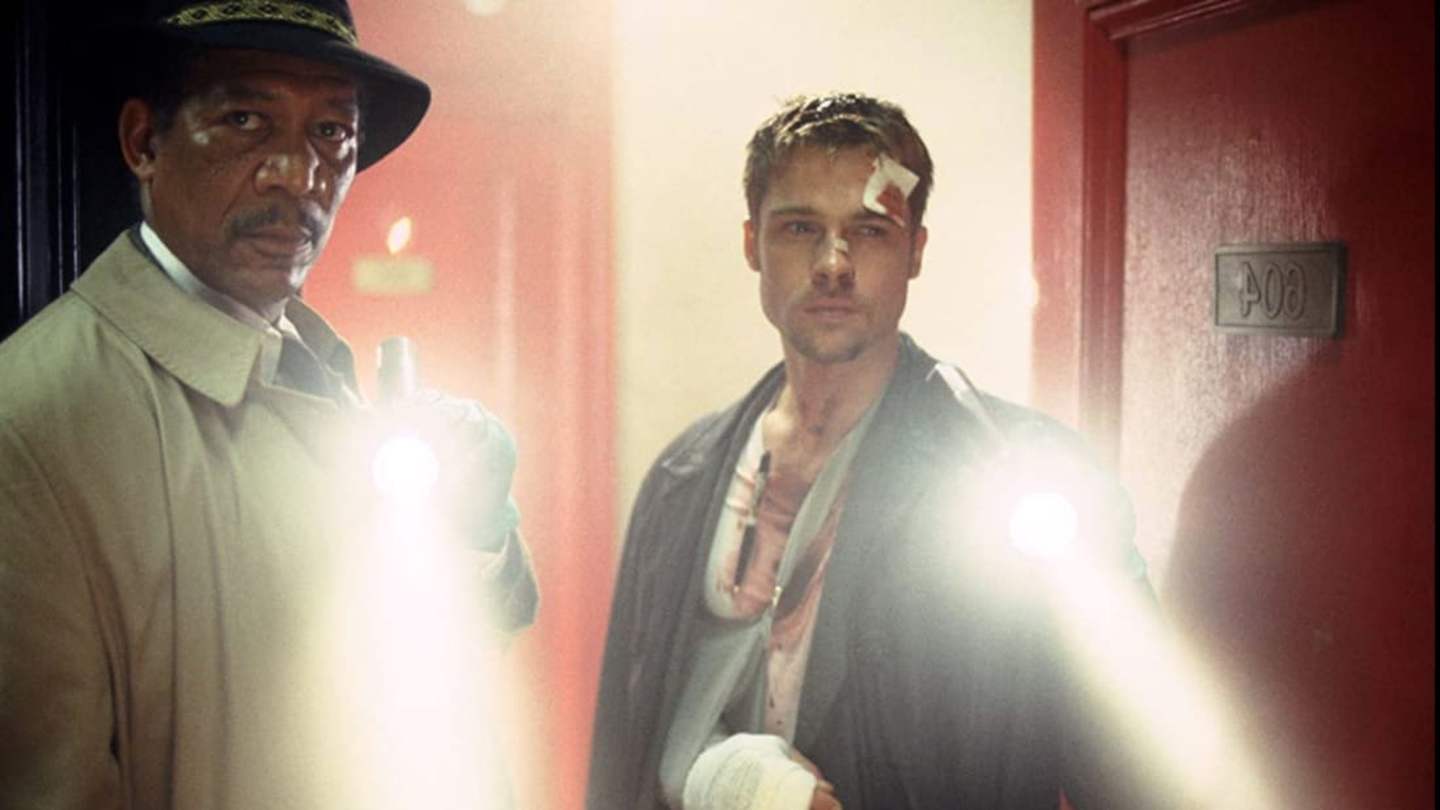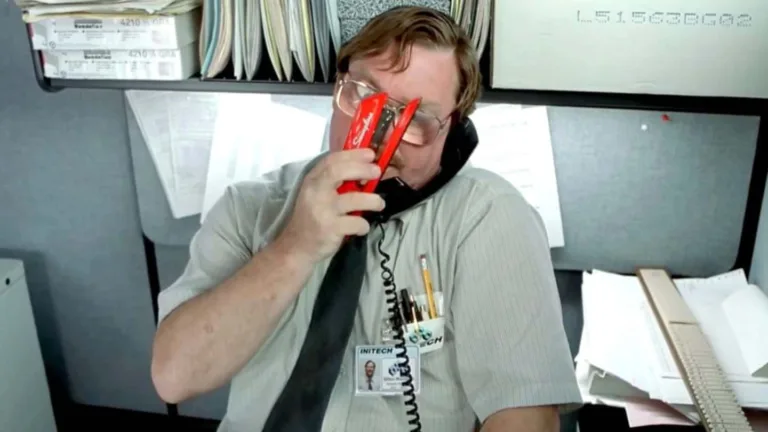“Se7en”, a chilling 1995 thriller about two detectives hunting down a serial killer obsessed with the Seven Deadly Sins, became a modern masterpiece despite initial skepticism from studios and even some Audience Members. Director David Fincher’s Bleak Vision, brought to life by Andrew Kevin Walker’S Intense Script, plunges viewers into a dark and unforgiving world where despair reigns supreme. The film’s enduring power lies in its unflinching portrayal of humanity’s Darkest Impulses, leaving audiences grappling with lingering questions long after the credits roll.
What makes “Se7en” truly captivating is the meticulous attention to detail that breathes life into Every Scene. From the innovative title sequence designed by Kyle Cooper, which set a new standard for Cinematic Opening Credits, to the off-screen violence that amplifies the tension and dread, Fincher masterfully crafts an immersive experience that pulls you into the detectives’ desperate pursuit of a killer who Embodies Pure Evil. The film’s success wasn’t a sure thing, though. It opened against “Showgirls,” a wildly different kind of film, and studios tried to push for a more traditional, Heroic Ending.
But Brad Pitt, who portrayed Detective Mills, insisted on keeping the original chilling finale – a head in a box that sealed the film’s reputation as a dark and unforgettable masterpiece. This ambiguity even led audiences to believe they saw Gwyneth Paltrow’s Severed Head Onscreen, which adds another layer of unsettling Intrigue To “Se7en.”
The Making of a Thriller
The making of “Se7en” was a journey into the depths of human darkness, both on screen and behind the scenes. Andrew Kevin Walker’s script, initially intended for another director, caught Fincher’s eye and he was drawn to Its Bleak, Uncompromising Vision. The story’s exploration of the seven deadly sins provided fertile ground for creating a chillingly realistic world where morality is tested at every turn.
During filming, Brad Pitt famously suffered an on-set injury while portraying Detective Mills, adding a touch of real-life danger to the already intense atmosphere. Casting was also crucial in bringing Walker’S Vision To Life. Michael Reid Mackay, known for his extremely thin frame, was chosen to play Sloth due to his physical resemblance to the character’s portrayal in Walker’s script. This meticulous attention to detail contributed to “Se7en”’s haunting and unforgettable aesthetic.
 Carolina Reaper Jelly Bean Scoville Heat Challenge
Carolina Reaper Jelly Bean Scoville Heat ChallengeThe film’s Impact Went Beyond Its Narrative; it pushed boundaries and redefined cinematic conventions. Kyle Cooper’s Revolutionary Title Sequence, a masterpiece of visual storytelling, set a new standard for filmmaking and became instantly iconic. Even the studio’s initial reluctance to embrace Fincher’s vision ultimately contributed to the film’s success. The decision to keep the original ending, despite pressure for a more conventional resolution, solidified “Se7en”’s place as a bold and uncompromising thriller that continues to resonate with audiences today.
Behind The Scenes On Set
Stepping onto the set of “Se7en” was like entering a world shrouded in perpetual twilight. Fincher’s meticulous attention to detail permeated every aspect of production, from the grimy, rain-soaked streets of the fictional city to the detectives’ worn-Out Uniforms. The atmosphere on set was undeniably tense, reflecting the dark and unsettling nature of the story being told.
Adding to the palpable tension were moments of genuine danger that arose During Filming. Brad Pitt, known for his dedication to his craft, sustained an injury while performing a scene, highlighting the real risks involved in bringing such intense material to life. The cast and crew forged a tight-knit bond amidst this challenging atmosphere, driven by their shared commitment to creating a truly impactful film.
Beyond the on-Screen Drama, “Se7en” was also notable for its innovative behind-the-Scenes Moments. The groundbreaking title sequence designed by Kyle Cooper became an instant classic, setting a new standard for cinematic Opening Credits. It’s these glimpses into the creative process that reveal the dedication and artistry woven into every aspect of this enduring thriller.
Seven Deadly Sins and Cinematic Influence
“Se7en” didn’t just tell a compelling story; it became a cultural touchstone due to its innovative use of the seven deadly sins as thematic pillars. Each sin was meticulously woven into the narrative, manifested through distinct crimes and characters that embody their respective vices. This approach wasn’t merely for shock value; it delved into the human psyche, exploring the darkness lurking beneath the surface of everyday life.
The film’s impact on cinema is undeniable. It solidified David Fincher’s reputation as a master of suspense and visual storytelling, influencing generations of filmmakers who followed in his wake. “Se7en” paved the way for a new wave of gritty, realistic thrillers that didn’t shy away from exploring complex Moral Dilemmas. Its influence can be seen in countless films that explore similar themes and utilize similar stylistic choices.
Even beyond its immediate cinematic impact, “Se7en” resonated with audiences because it tapped into universal fears and anxieties. The film’s exploration of the Seven Facts About Human Nature – greed, envy, lust, pride, gluttony, wrath, and sloth – continues to provoke discussion and reflection long after the credits roll. It serves as a chilling reminder that darkness can exist even in the most seemingly ordinary places, urging us to confront our own potential for evil.
A Legacy of Ambiguity
“Se7en”’s enduring legacy rests partly on its masterful use of ambiguity.
The ending, with John Doe’s seemingly triumphant reveal and Detective Mills’ Descent Into Darkness, leaves viewers grappling with unanswered questions. Was justice truly served? Did Mills cross the line? The film refuses to provide easy answers, instead inviting us to contemplate the complexities of morality and the blurred lines between right and wrong in a world consumed by sin. This lack of closure adds a layer of psychological depth, prompting repeated viewings and endless discussions Among Fans.
This deliberate ambiguity also fueled the infamous misconception that Gwyneth Paltrow’s Severed Head Appears Onscreen. The film’s Unnerving Imagery, coupled with the lack of concrete resolution, allowed audience imaginations to run wild, creating a lasting impact that transcended the confines of the screen. This testament to the film’s Power Demonstrates How “Se7en” continues to resonate with viewers, provoking thought and debate long after Its Initial Release.
Exploring Se7en’S Enduring Impact
“Se7en’s” influence extends far beyond the realm of cinema, permeating popular culture and inspiring countless adaptations, Homages, and artistic reinterpretations. The film’s chilling atmosphere and exploration of dark themes have found their way into Video Games, literature, and even music, demonstrating its enduring power to captivate and disturb audiences.
Even without a direct sequel, “Se7en” continues to resonate with contemporary viewers grappling with anxieties about crime, morality, and the darker aspects of human nature. Its exploration of complex themes remains relevant in an age where violence and corruption are often sensationalized in media. The film’s lasting impact lies not only in its technical brilliance but also in its ability to provoke thought and spark conversations about the complexities of the world we live in.
The enduring popularity of “Se7en” is a testament to its power as a cinematic experience. It reminds us that great films Transcend Time, leaving an indelible mark on our cultural consciousness and prompting us to confront the darkest corners of human existence.










